Notes from the field: a stopover in Milan
I'm back in Italy! I flew into Milan, stashed my suitcase in storage, and headed straight for the nearest museum.
After a full academic year, the moment has finally arrived: I’m back in Italy! I will be spending the month of June in the bel paese, and my to-do list while here includes exploring, researching, working on projects, leading a series of tours, seeing friends, and eating my weight in pasta! It’s only been a couple of days and I’m already making a valiant effort on that last point in particular.
My itinerary for this trip will take me across northern Italy, moving from west to east. I flew into Milan this time, and after dozing for all of maybe 45 minutes on my flight, I was practically running on fumes on the day of my arrival, but I had big plans! So I ordered an espresso at the airport, hopped on the first train into town, left my suitcase in a luggage storage locker, and walked into the center of the city (pro top: one line of the Malpensa express train will take you to Milano Cadorna, which is much closer to everything than Milano Centrale).
The timing of my flight was such that I happened to arrive on a national holiday, the Festa della Repubblica, so many museums were closed – but not the Pinacoteca Ambrosiana! I spent a couple of blissful hours wandering through its galleries, exploring works both exquisitely beautiful and wildly strange – the collection contains some incredibly fascinating works.
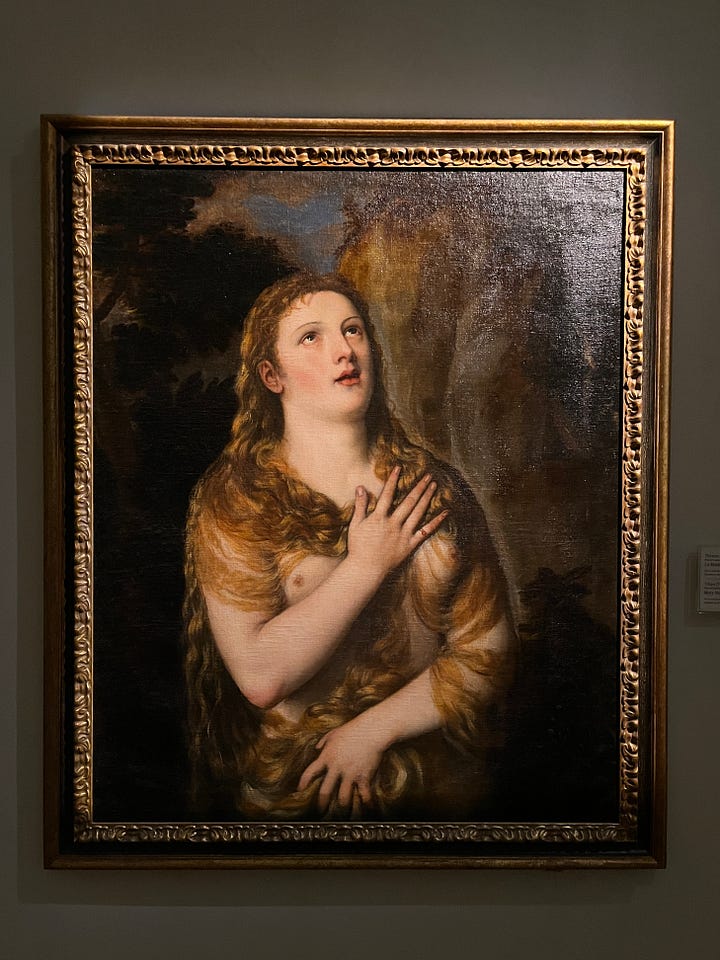
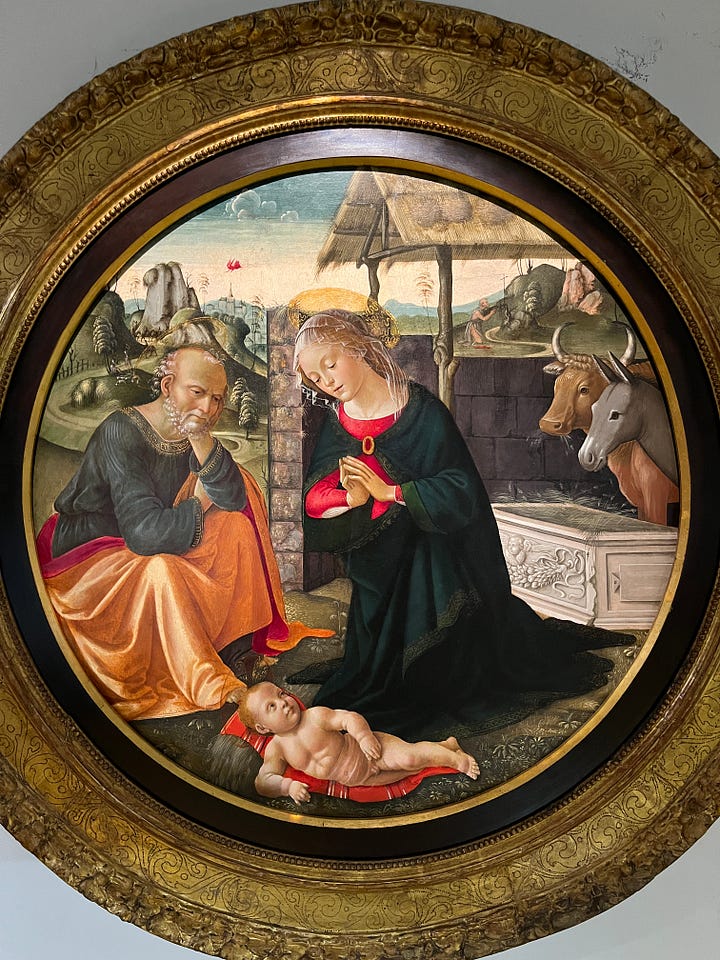
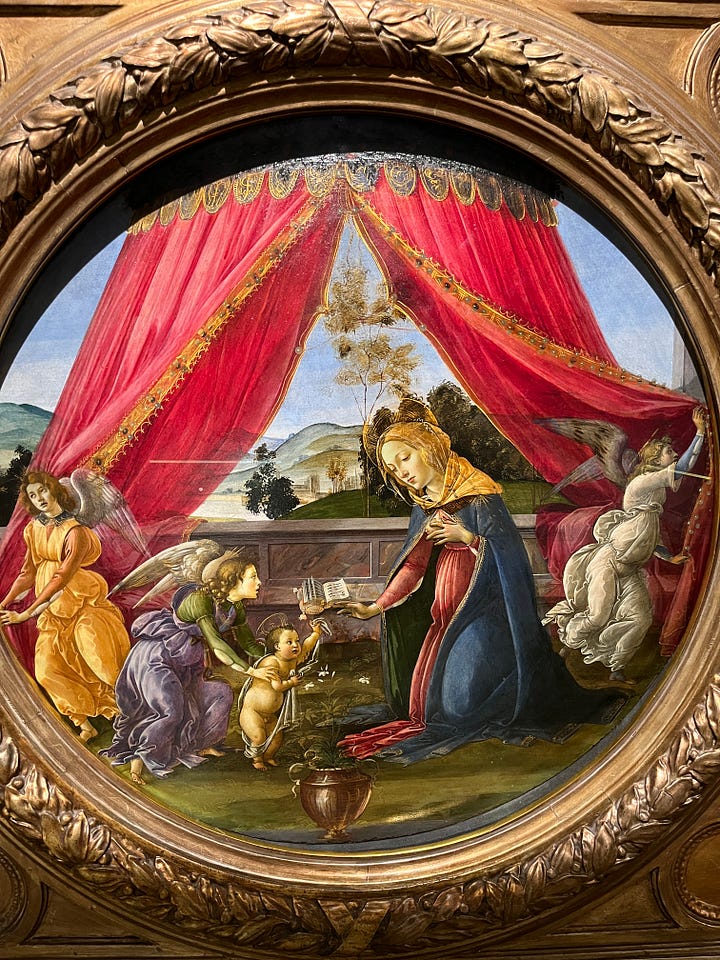
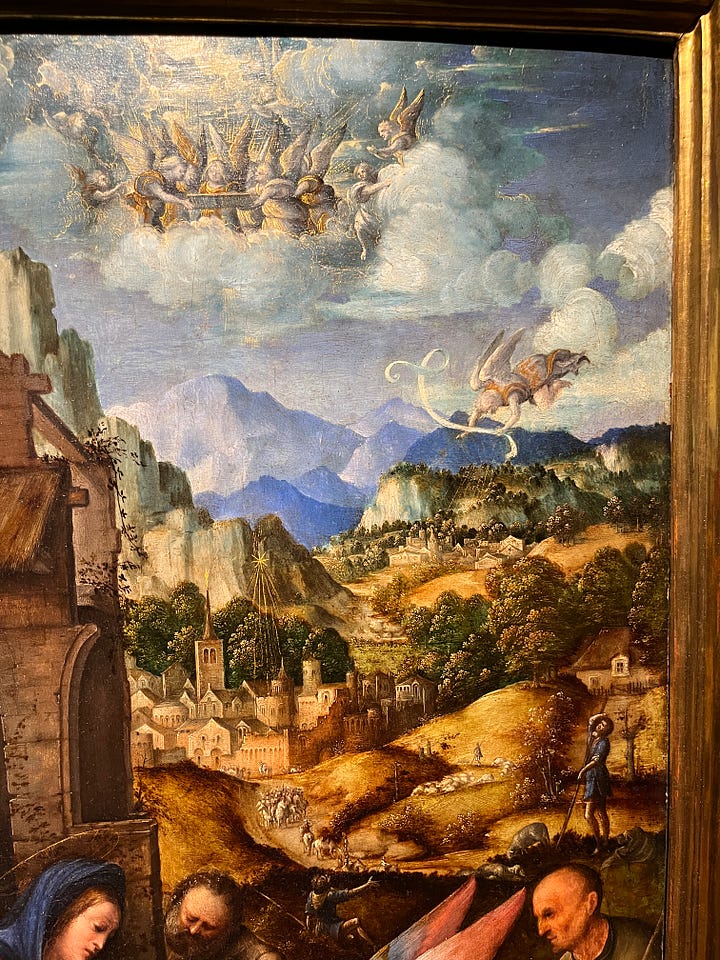
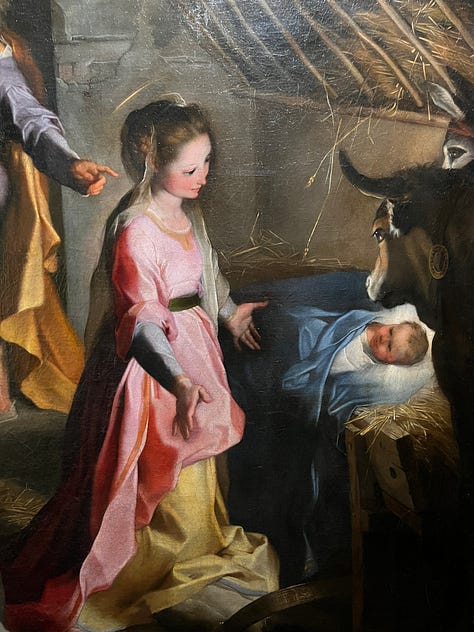
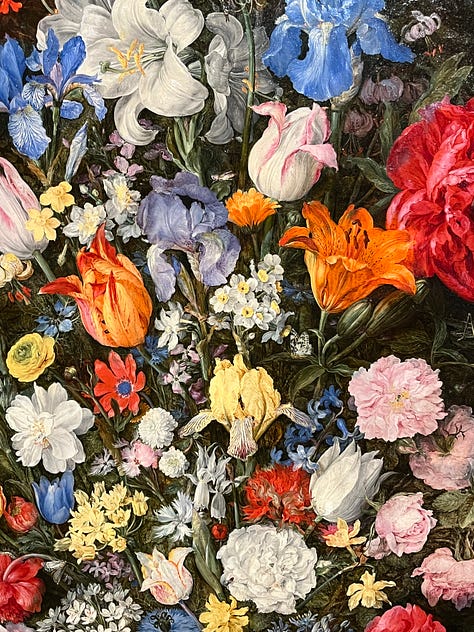
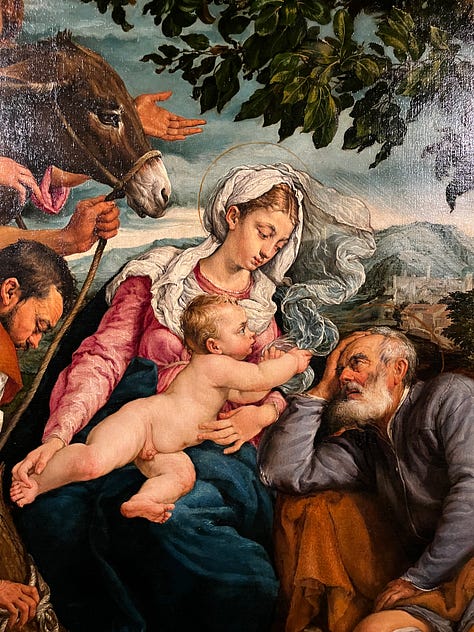
I could wax poetic at great length, I’m sure, about the beautiful works by Botticelli, Titian, Barocci, and Caravaggio that I saw (look at how the light glistens on the flesh of the grapes in that resplendent basket of fruit! It’s almost as if you could reach in and grab one, the basket appears to be sitting on the edge of the picture frame, after all – but I digress). Yet I would prefer to briefly explore a couple of other works that captured my curiosity for entirely different reasons.
Bramantino’s Madonna and Child Enthroned with Saints Ambrose and Michael is one of these. The upper portion of the composition is warm and harmonious, while the tender reach of the Christ child towards Saint Michael and the miniature figure that he holds in his hands, representing the souls of the dead, offers a poignant touch. In the foreground, though, two figures lie lifeless upon the floor, rendered at a daringly foreshortened angle: at the feet of Saint Ambrose lies the heretic Arius, who had promoted the belief that Jesus was not divine, given that he was created by God the Father. Ambrose fought against this heretical strain called Arianism for many years – the corpse that lies at his feet symbolically represents his battle against heresy. The corpse at the feet of Saint Michael is more enigmatic at first glance, as it is that of a large toad, which here represents evil and, more specifically, Michael’s defeat of the devil.
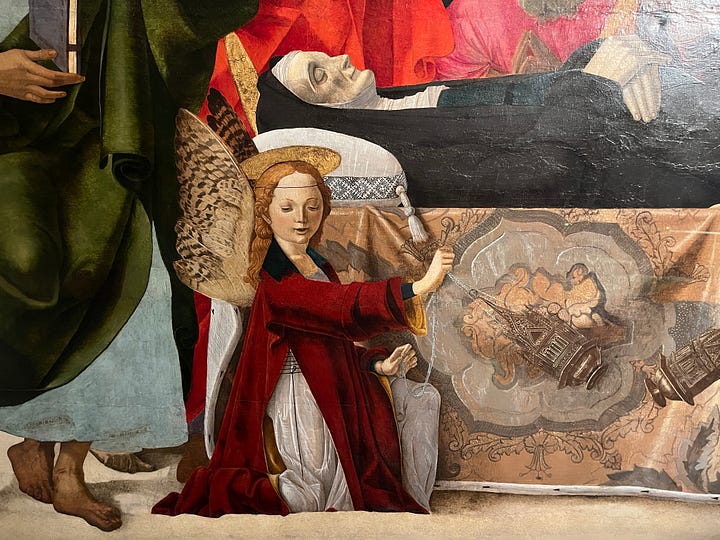
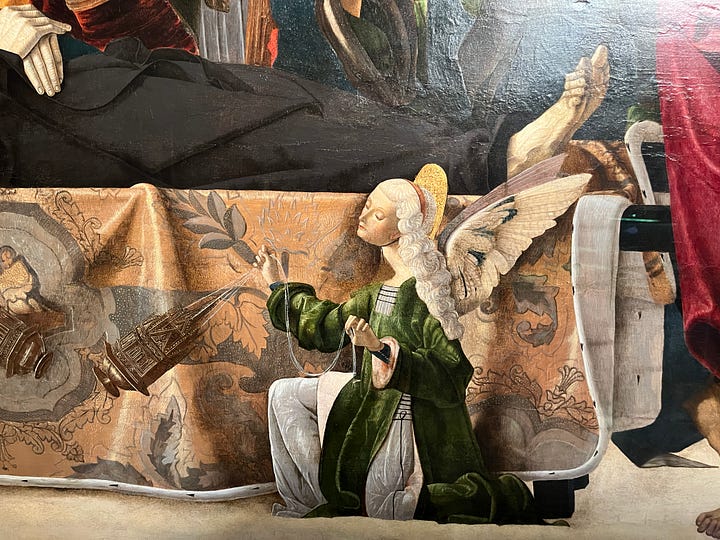
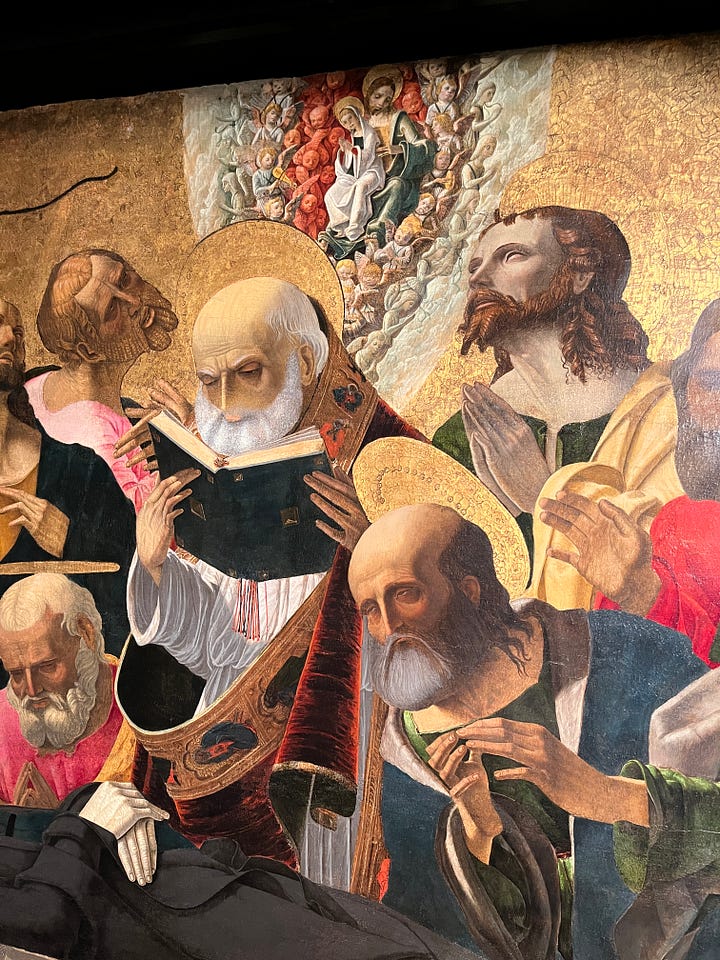
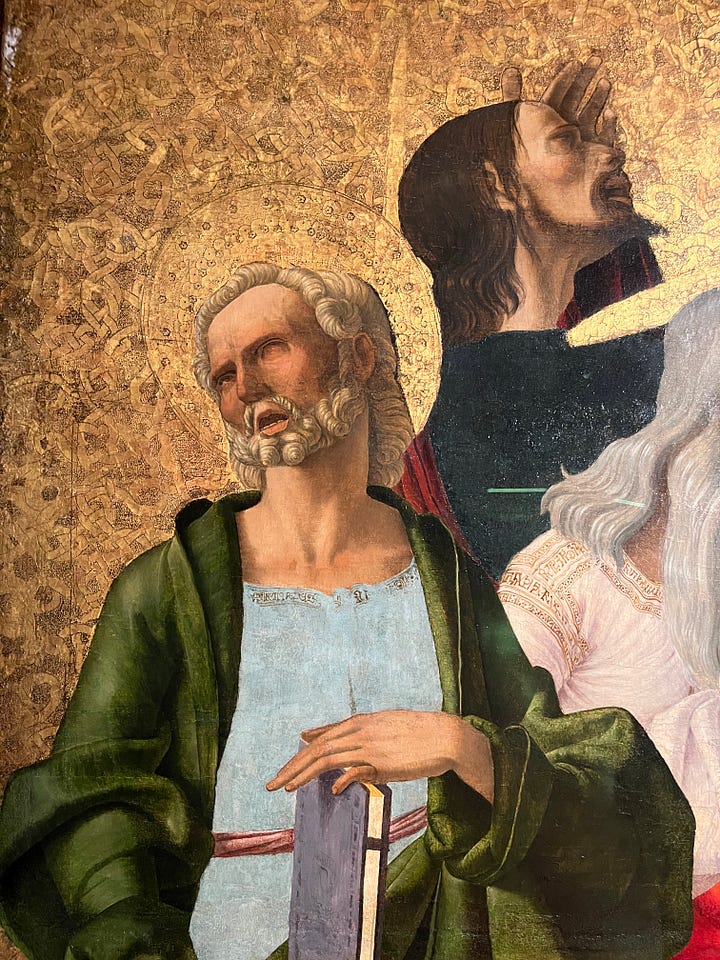
Even stranger, though – at least stylistically – is the depiction of the Dormition of the Virgin by an anonymous Ferrarese artist, painted towards the end of the fifteenth century. According to tradition, the Virgin Mary did not experience physical death, but rather fell into a slumber, after which she was assumed – carried upward – towards heaven. In the painting, we see Mary laid out upon what looks like a funeral bier draped in sumptuously woven fabric; she is surrounded by the apostles who look on in poses that suggest devotion, grief, and even astonishment (such is the case for ever-doubting Thomas, who stands on the upper left and holds the Virgin’s girdle, which she has dropped for him during her ascent to heaven). She appears in heaven with Christ, surrounded by choirs of angels – cherubim, seraphim, and so on.
The figures are rendered with such stylistic eccentricity that they can only be the product of a Ferrarese workshop, it would seem – visual culture in Ferrara in the later fifteenth century is characterized by a taste for the uncanny, as is particularly apparent in the works of Cosmè Tura, for example. The uncanny-ness, if you will, is on another level here though. I was particularly taken with the angels who swing censers in the foreground: the neck of the angel on the right is impossibly long and turns at the strangest angle, and there is something doll-like about the face of the angel on the left. The exquisite description of the texture of the feathered wings is almost Netherlandish in its precision – and thus the strange and the utterly naturalistic commingle in this unusual work.
Here the censers create an implied olfactory experience for the viewer, as if one could imagine the incense wafting from them, yet there was actually a multisensory special installation alongside the permanent collection: distributed periodically throughout the galleries were garments (liturgical vestments in particular) paired with specially curated perfumes designed to evoke themes related to the garments as well as other objects to which they were juxtaposed. As someone with a very sensitive nose, I am easily overwhelmed by scents, but the vast majority of these were not only pleasing but practically intoxicating. I truly enjoyed the opportunity to engage more of my senses in the museum-going experience.
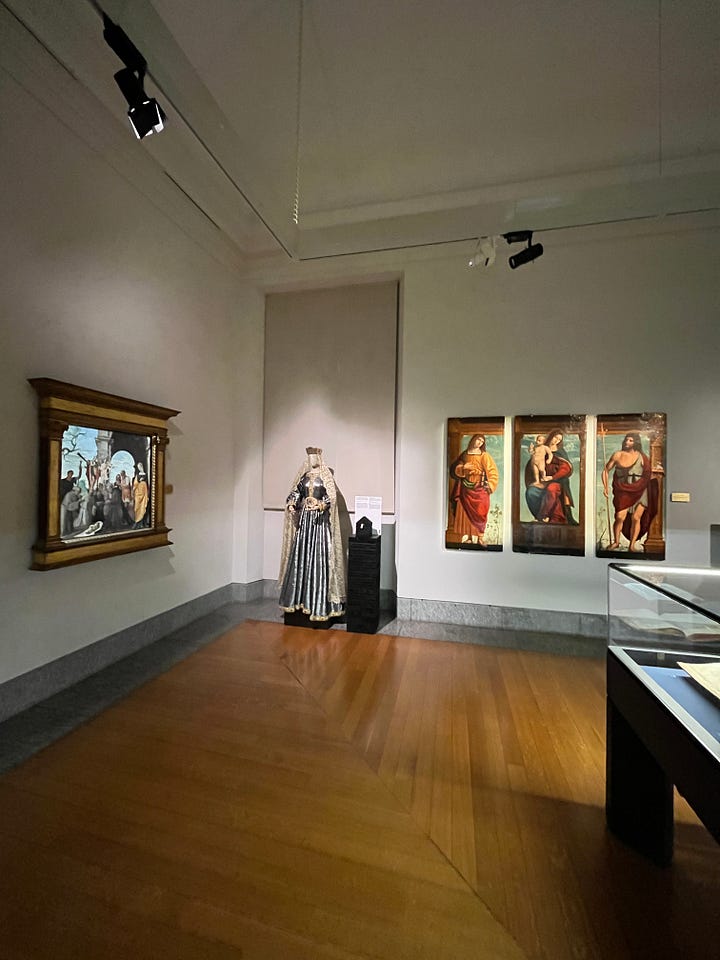
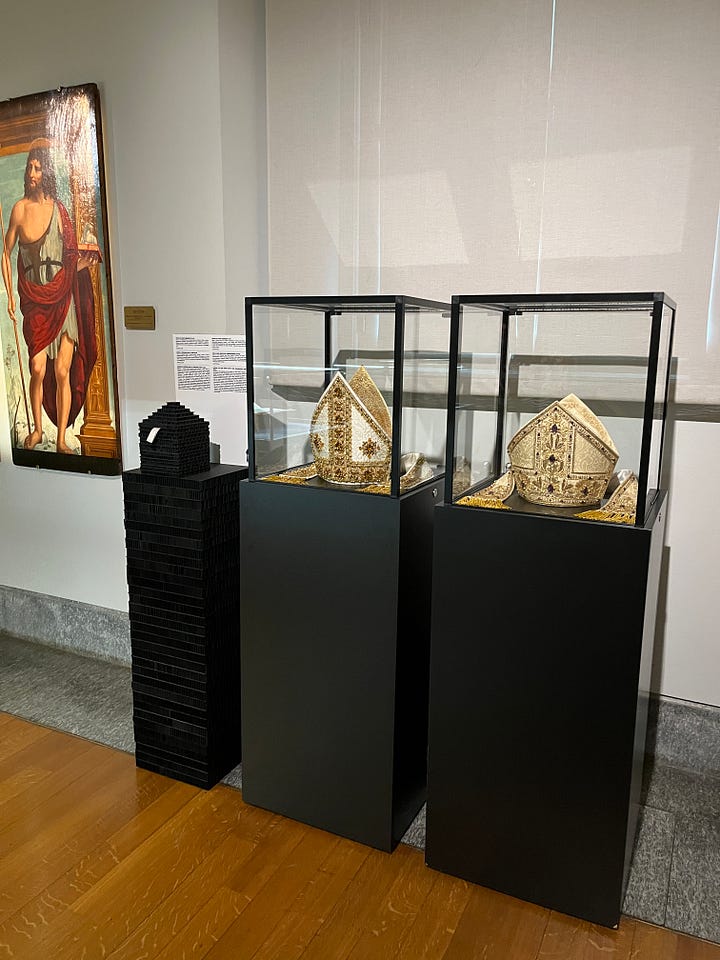
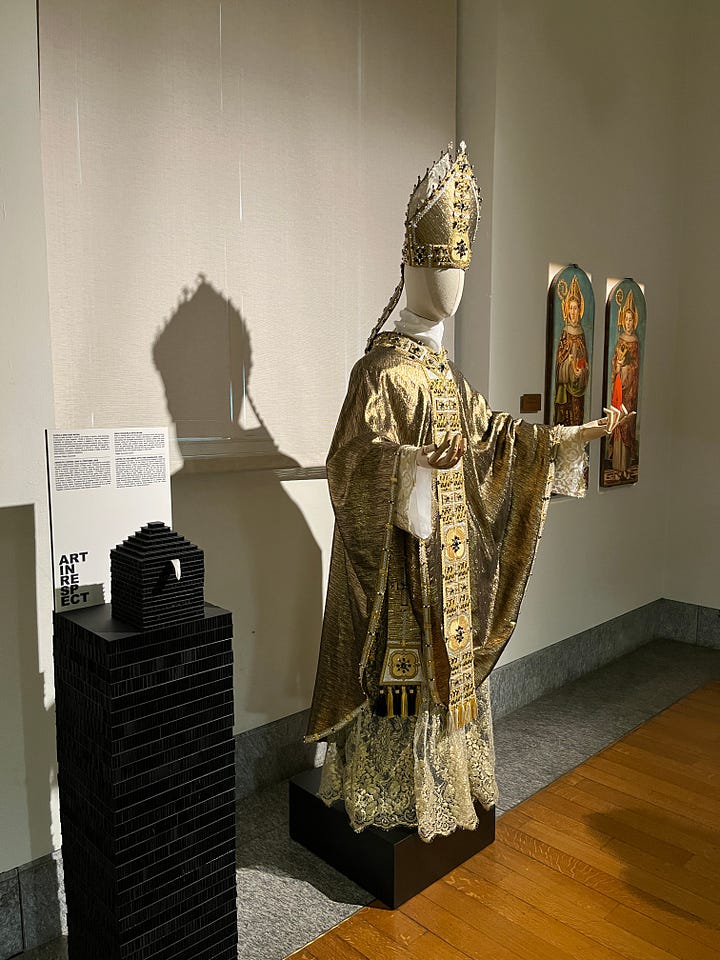
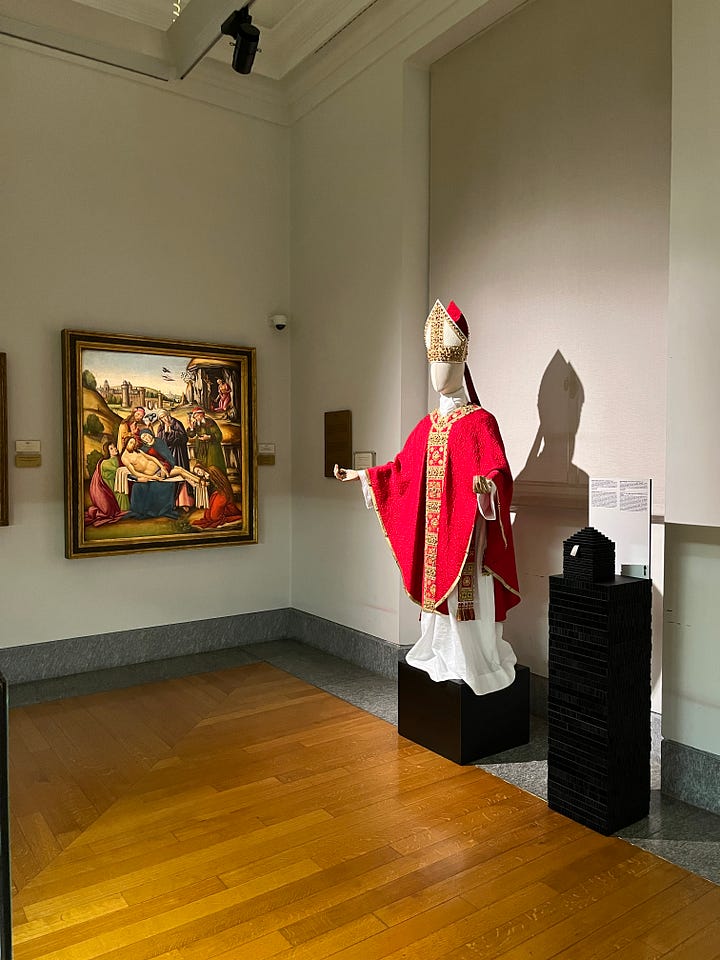
The exhibition, titled Art in Respect: A Dialogue and curated by couturier Filippo Sarcinelli, is on until June 24th.
Following my visit to the Ambrosiana, I headed to the Duomo area for lunch at one of my go-to spots: Obicà Mozzarella Bar. This Italian institution (with locations abroad, including New York and London) has been a favorite of mine ever since my Florence days, as a dear friend of mine with whom I nearly share a birthday (just off by a few hours!) was then the director of their Florence location.
The Milanese locale is positioned just beside the Duomo, on the top floor of the Rinascente shopping complex, which allows for panoramic views of the pinnacles crowning the Gothic Cathedral. If the weather had been better I would have sat outside, but between the heat, humidity, and the threat of rain, an inside table was a better choice for this day.
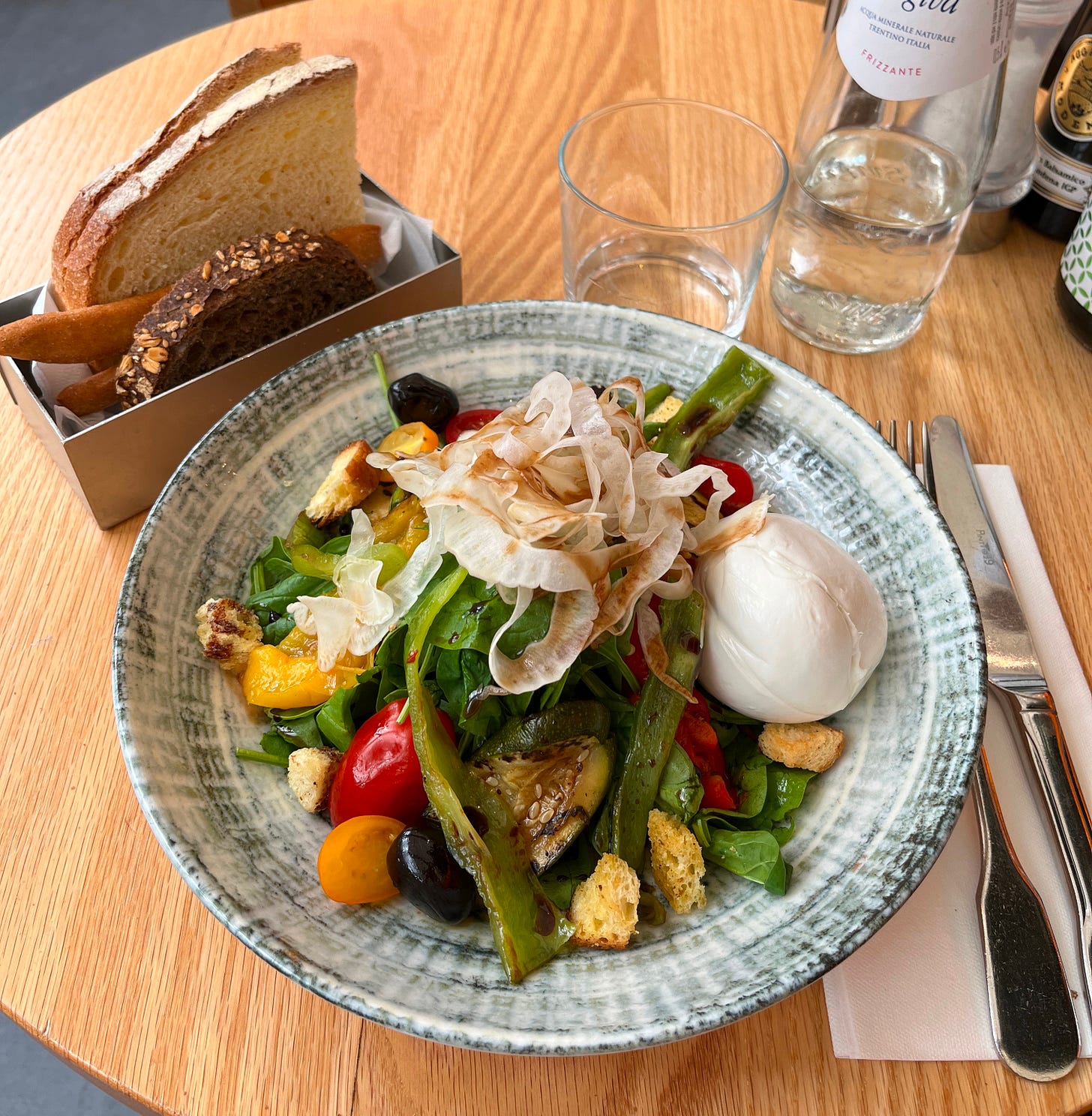
I then hopped onto the metro as it had begun to drizzle, and was back to Cadorna in no time to pick up my suitcase. Next stop: Turin!
A presto,
Sophia


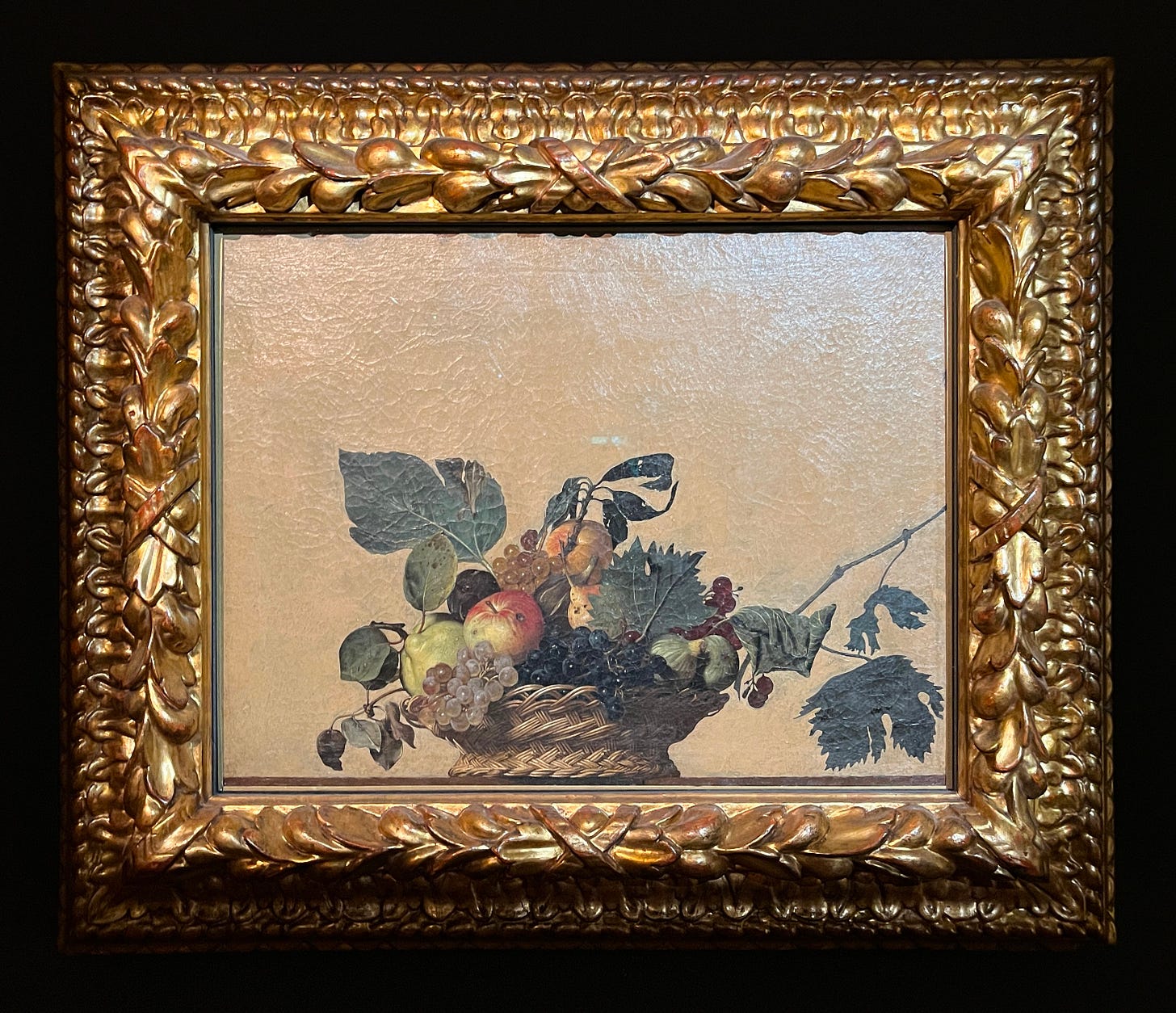
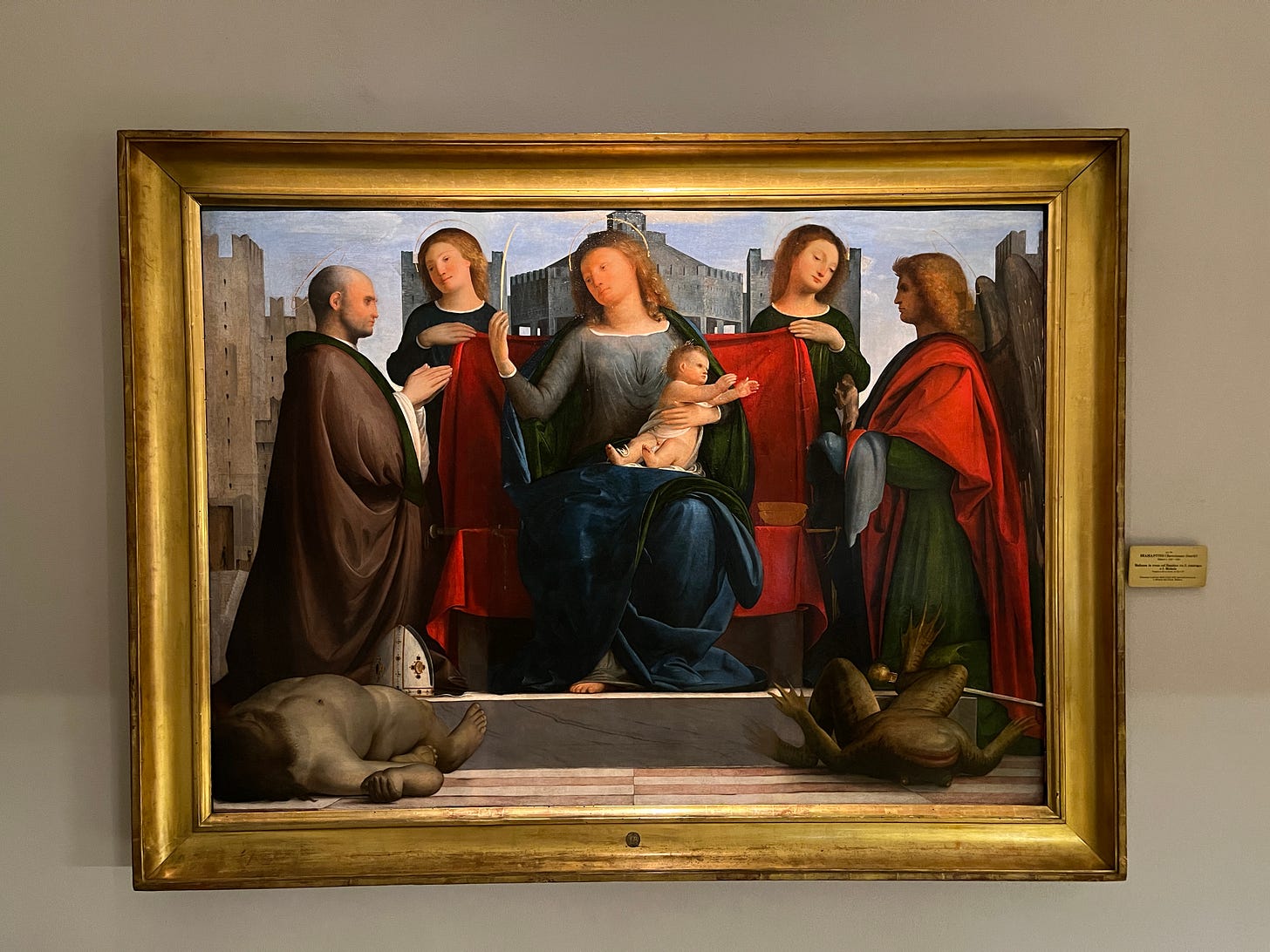
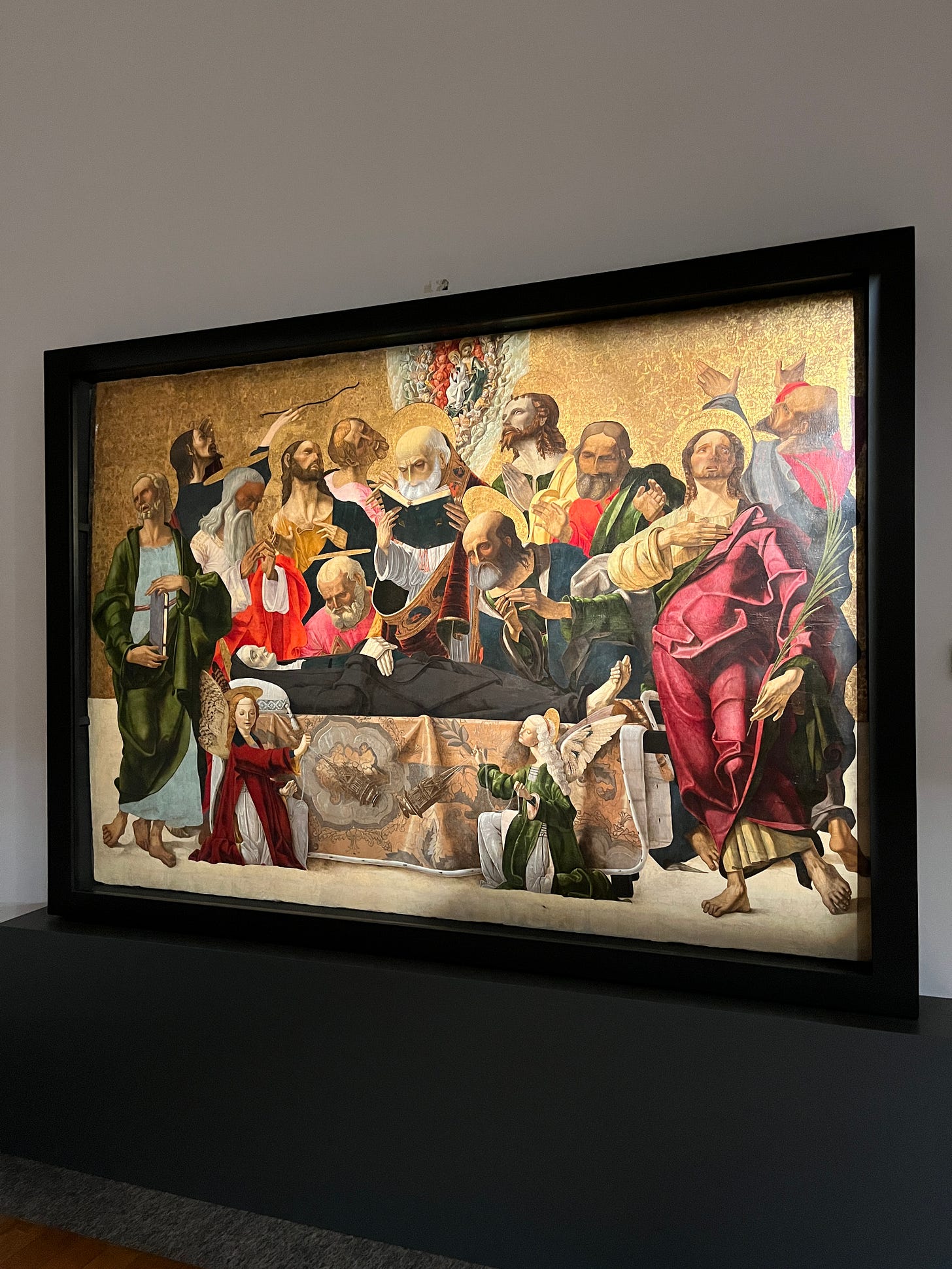
I loved reading about your stop at the Ambrosiana. Your descriptions of the artworks there, especially the Ferrarese piece whose figures are so stylized that they look nearly modern, made them come alive for me and now I wish I could have been there with you to receive your assessments in person. I look forward to the next update on your trip. Stay safe and enjoy my dear girl.